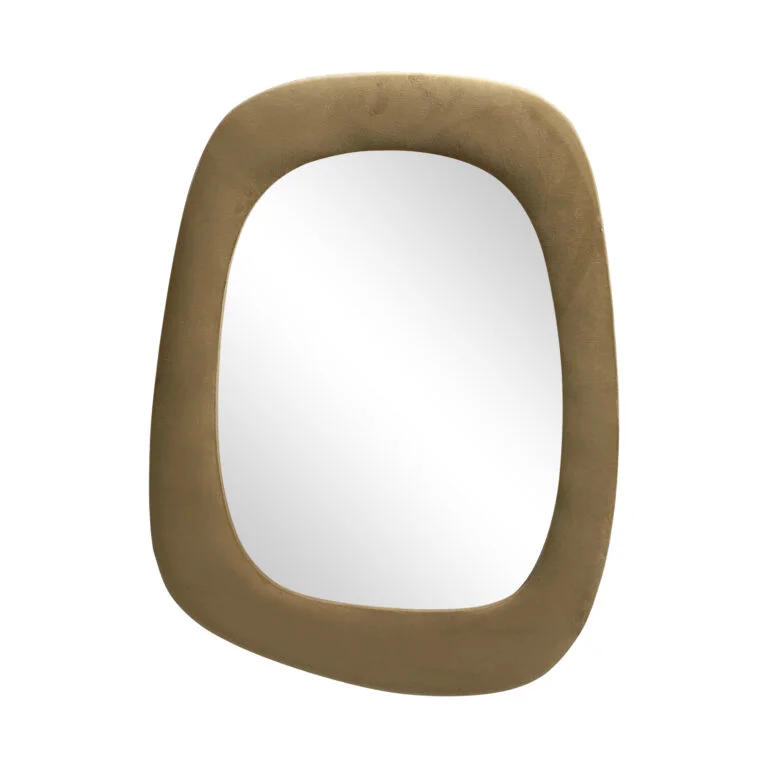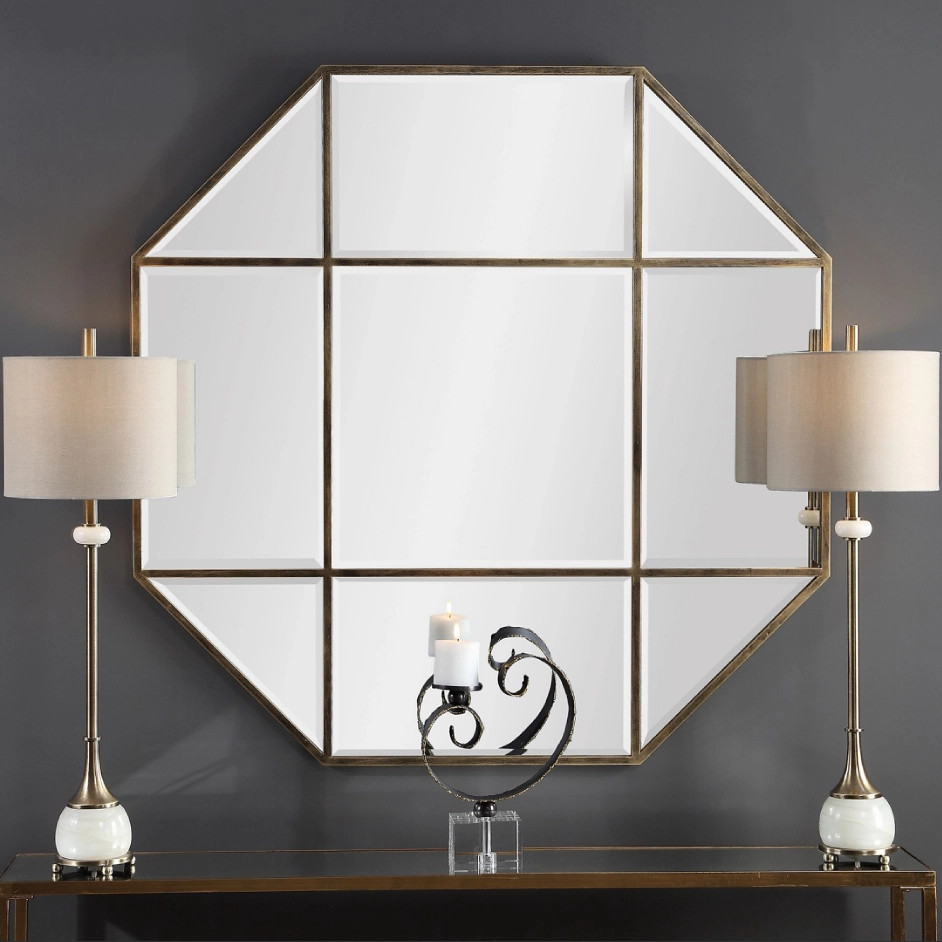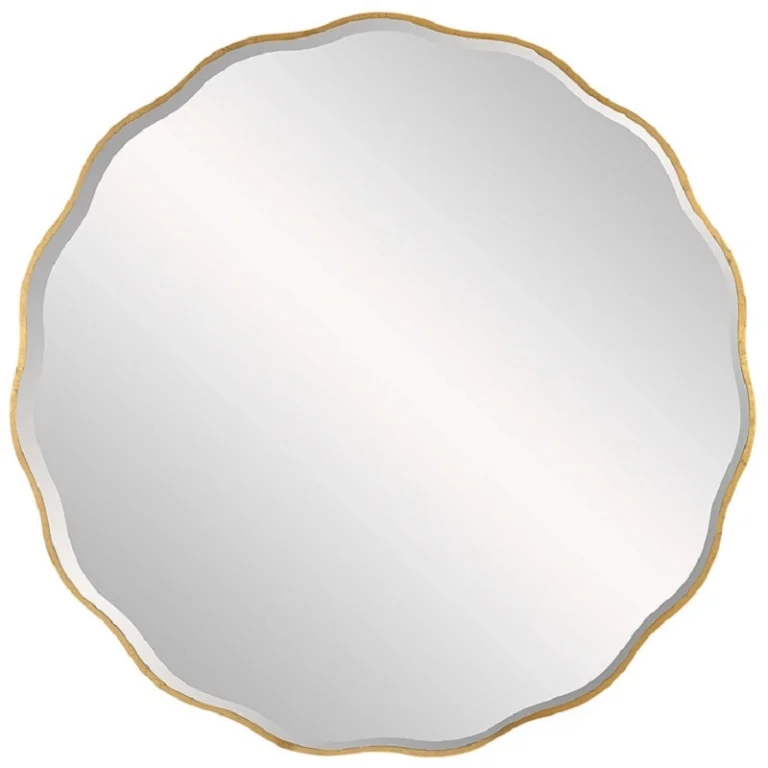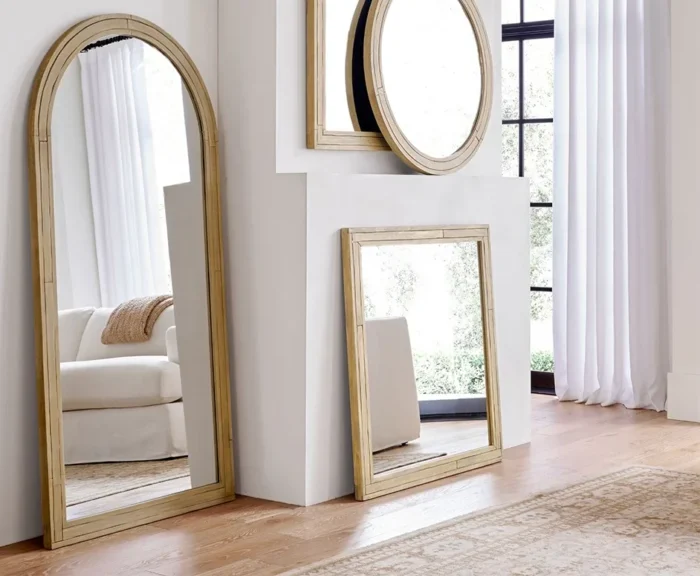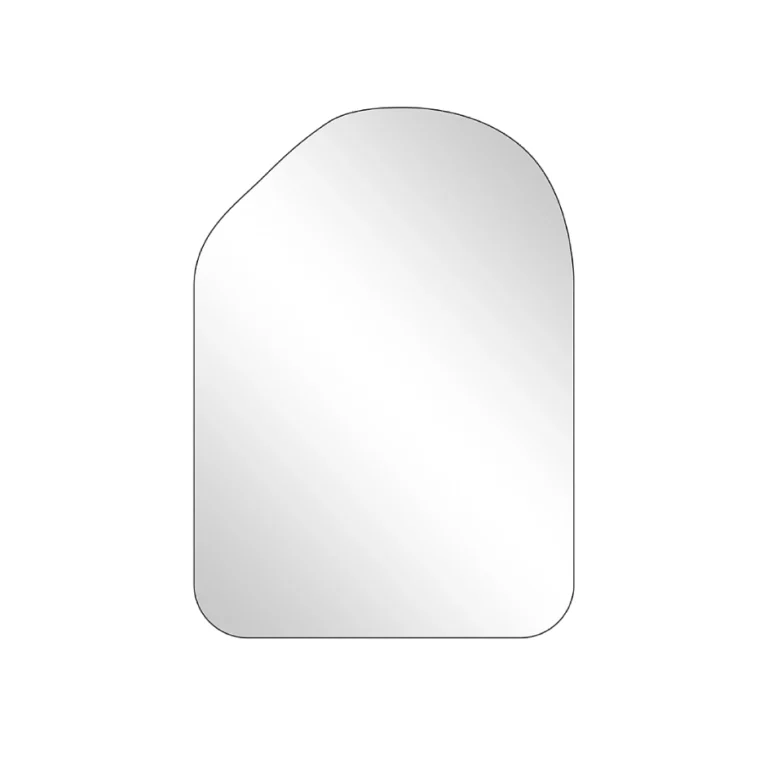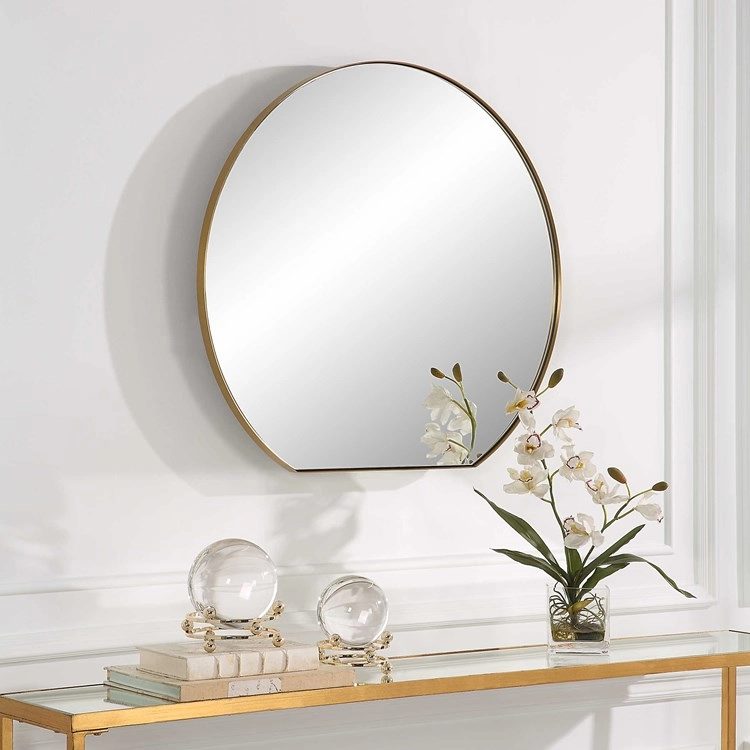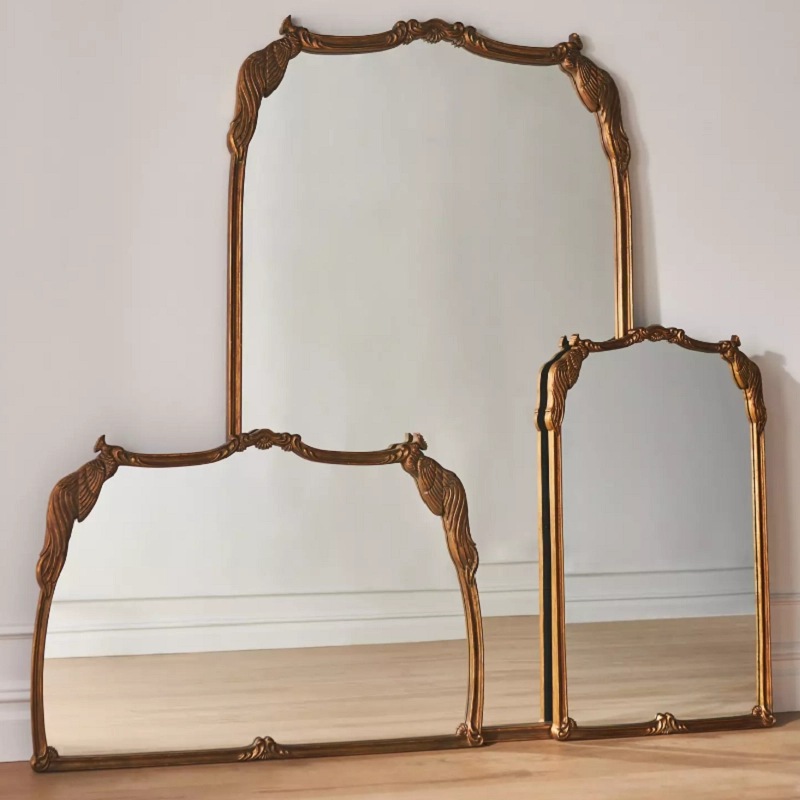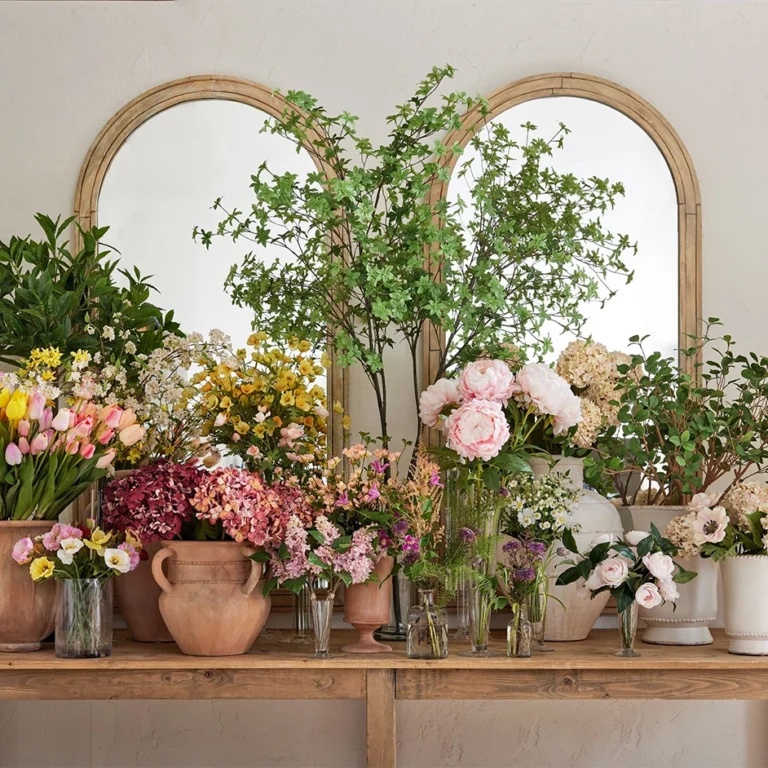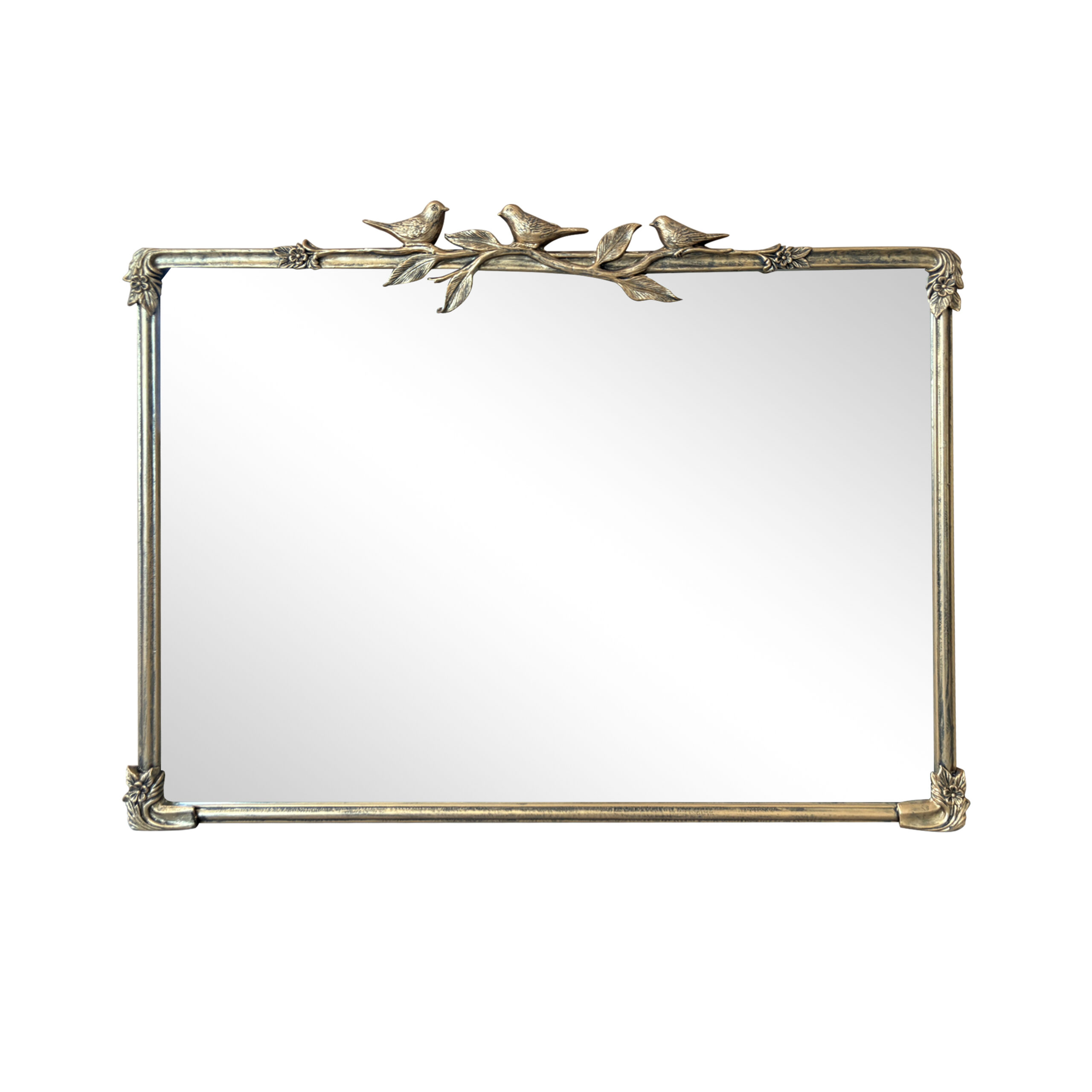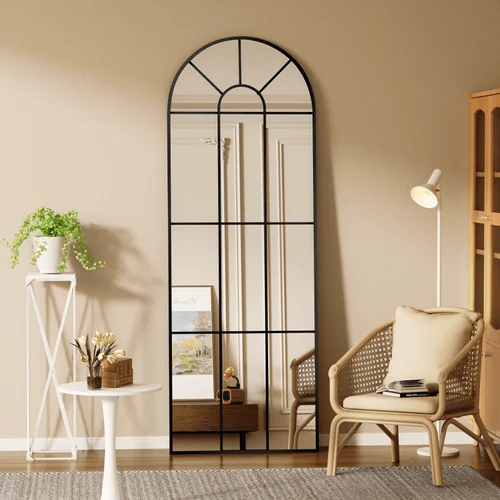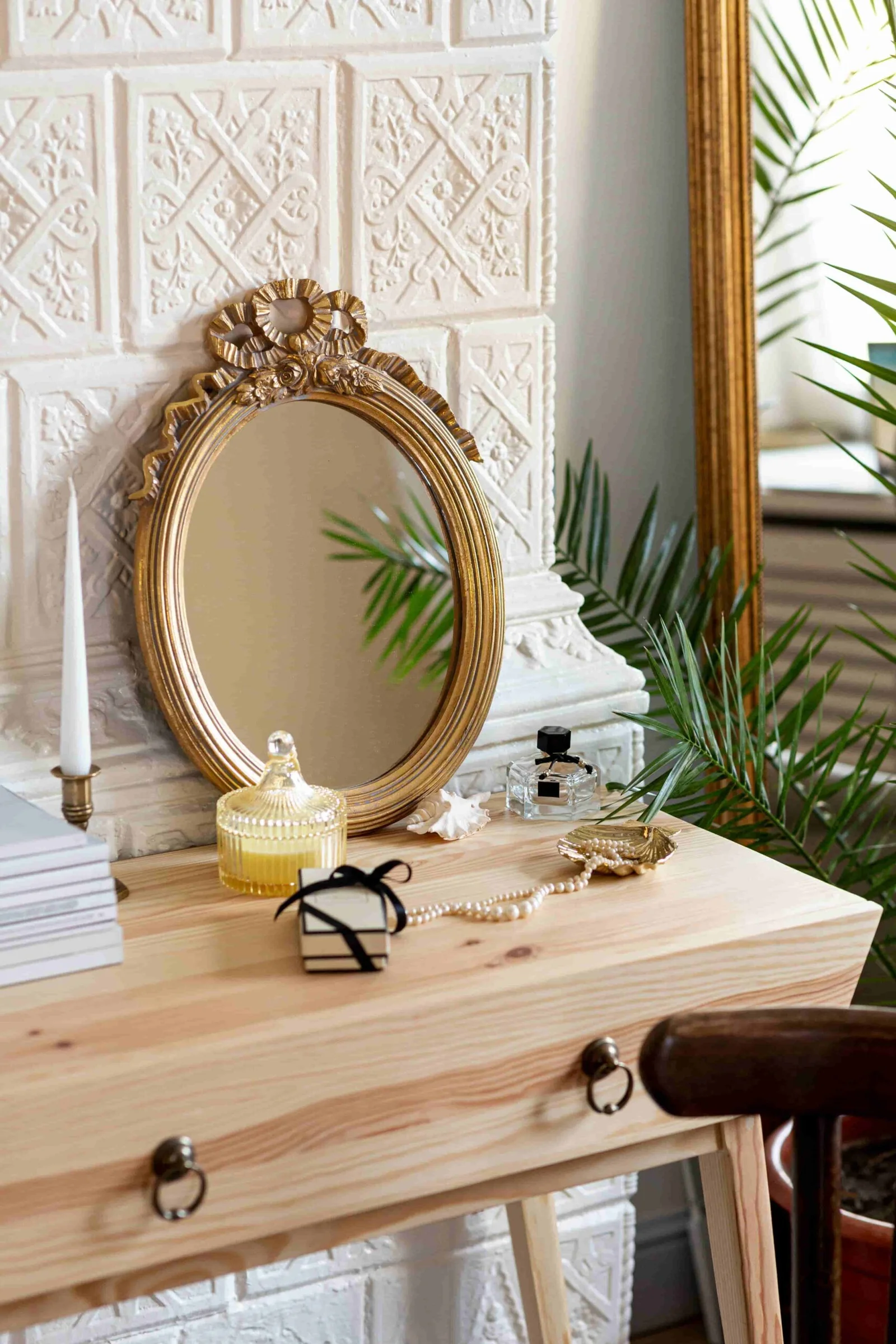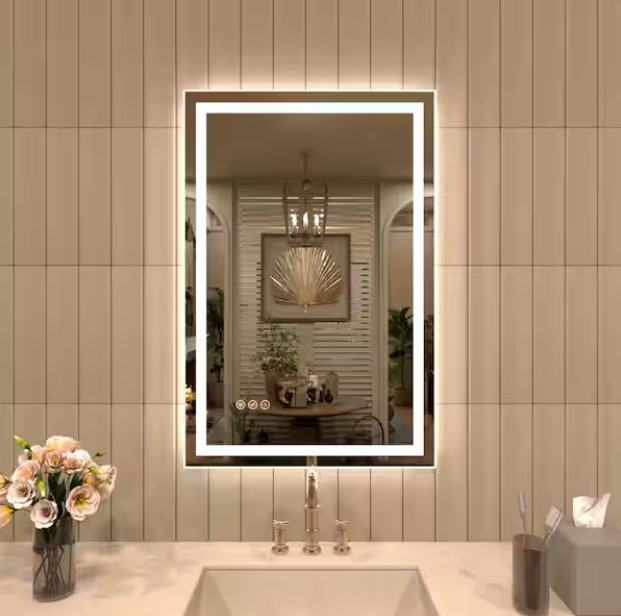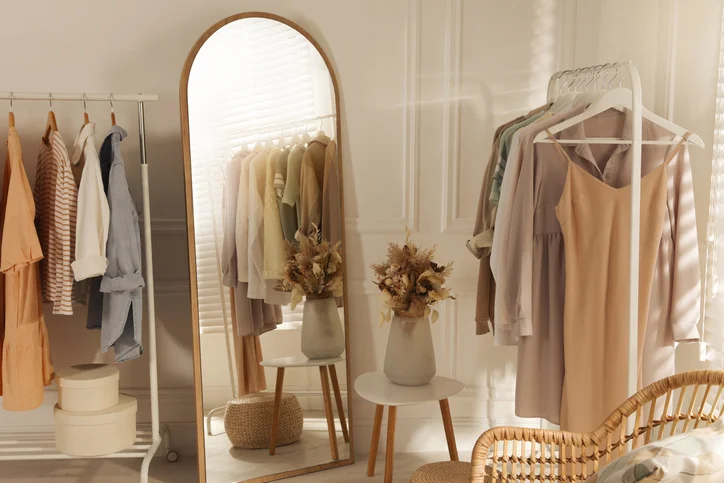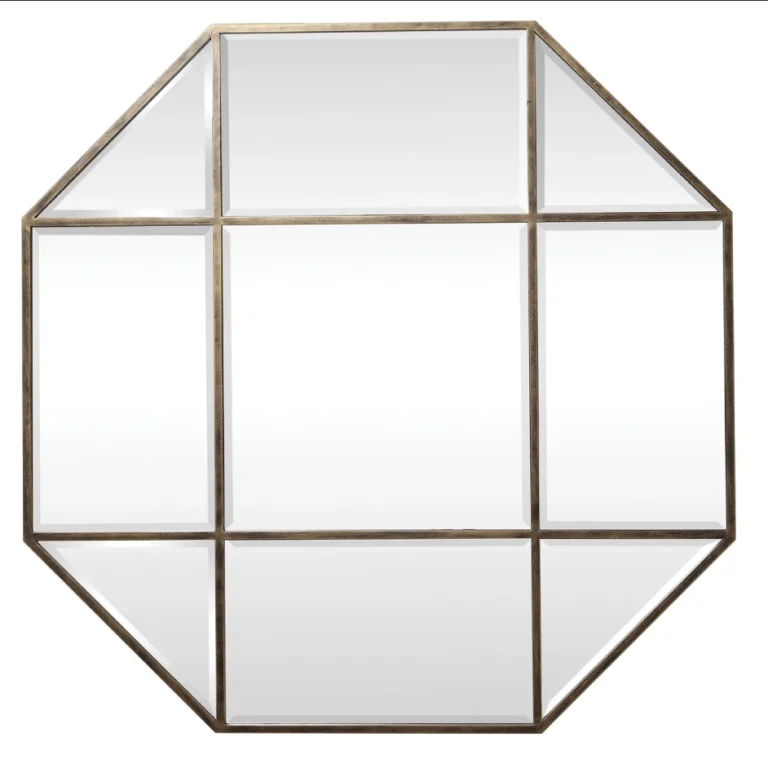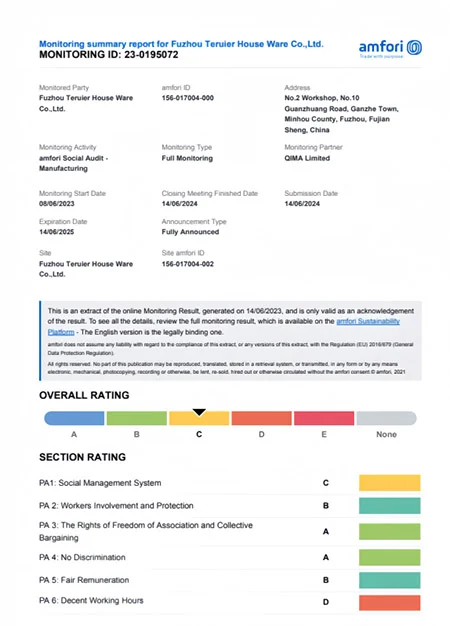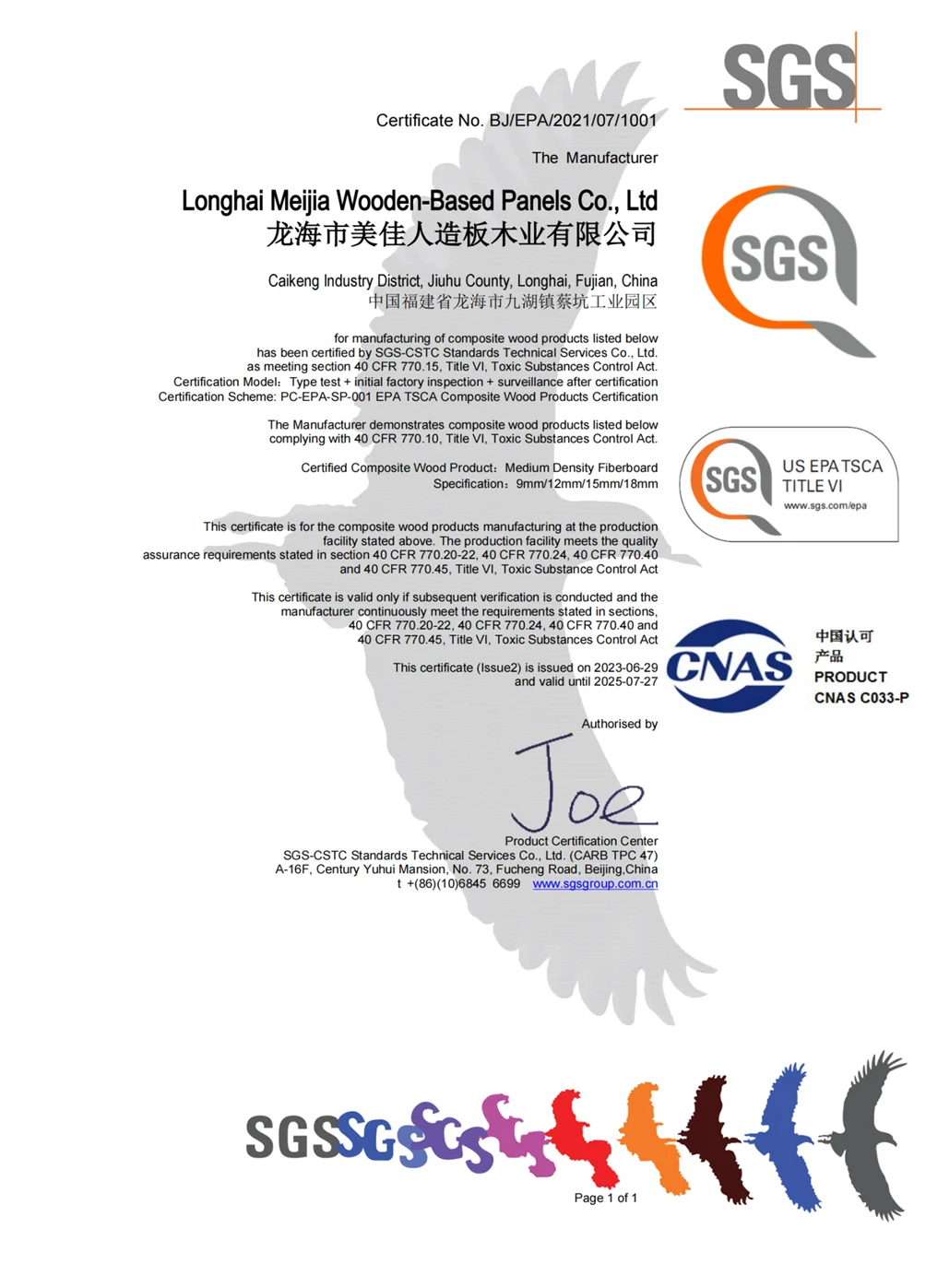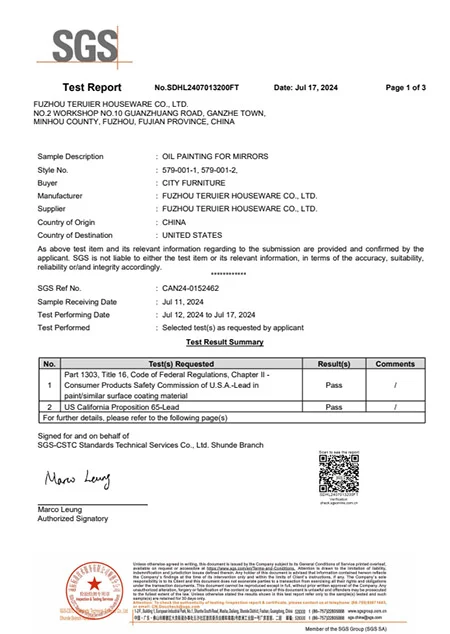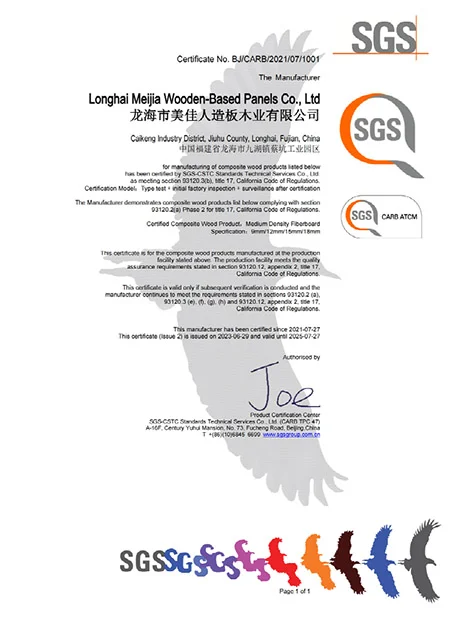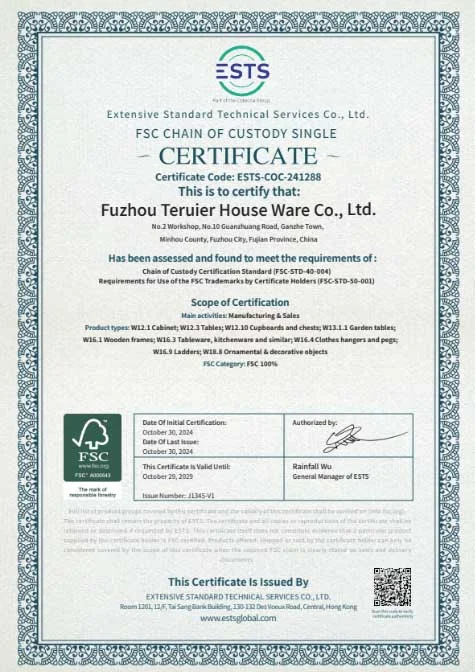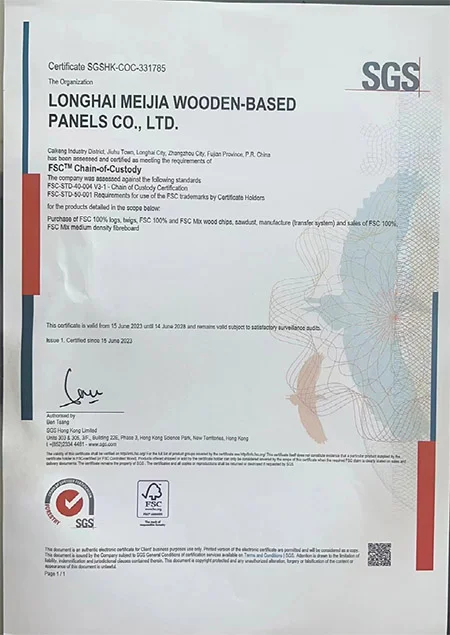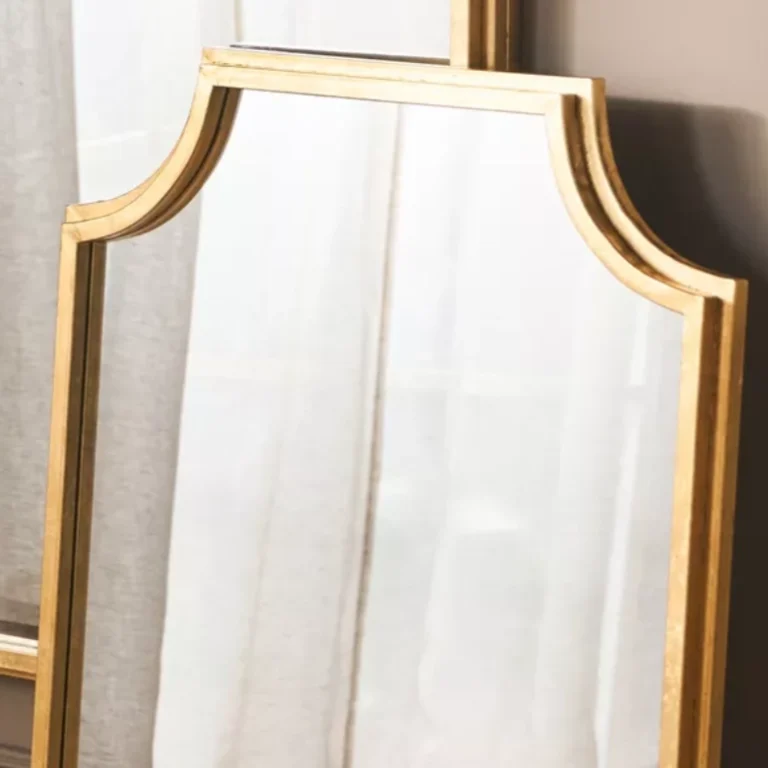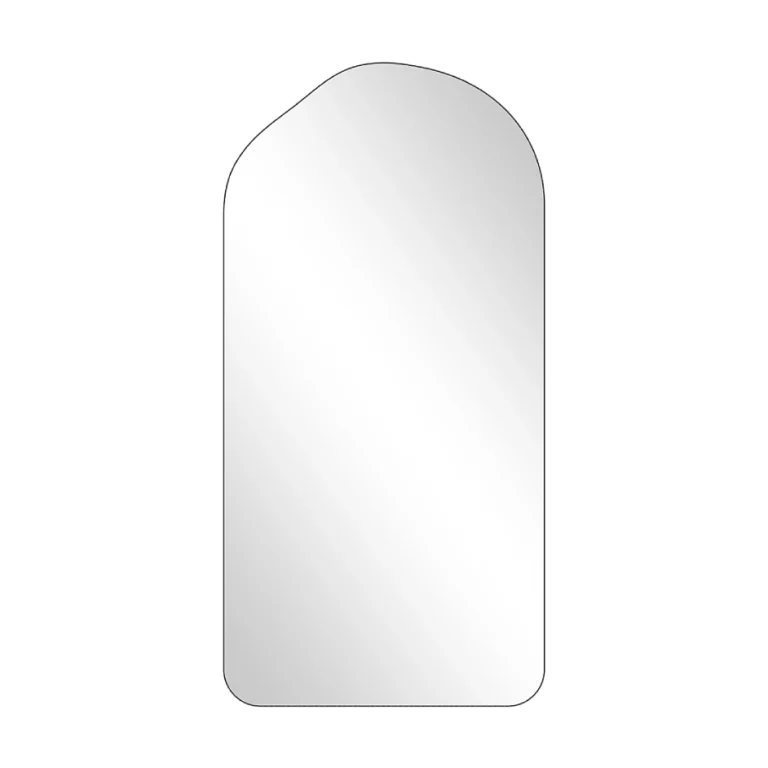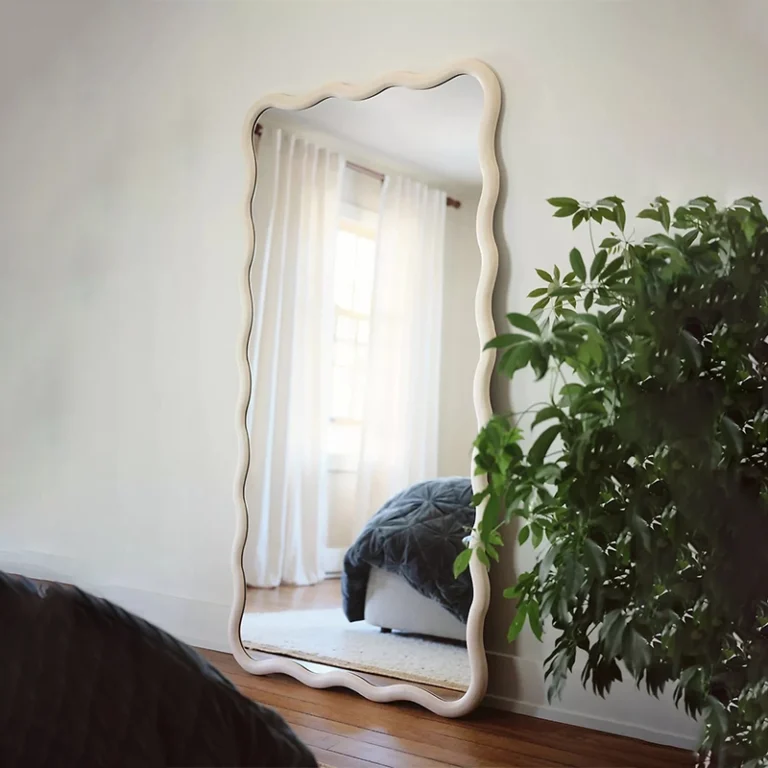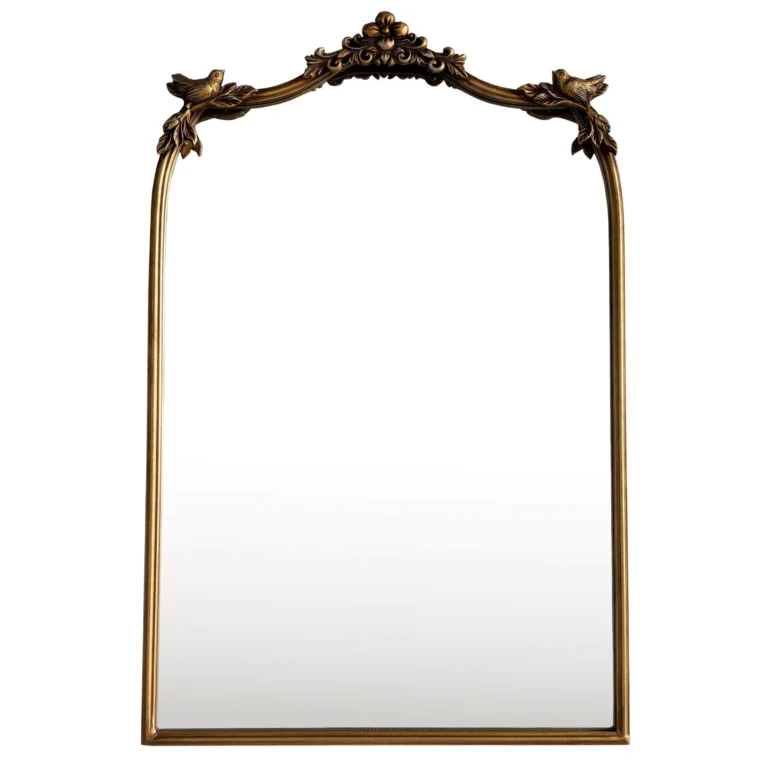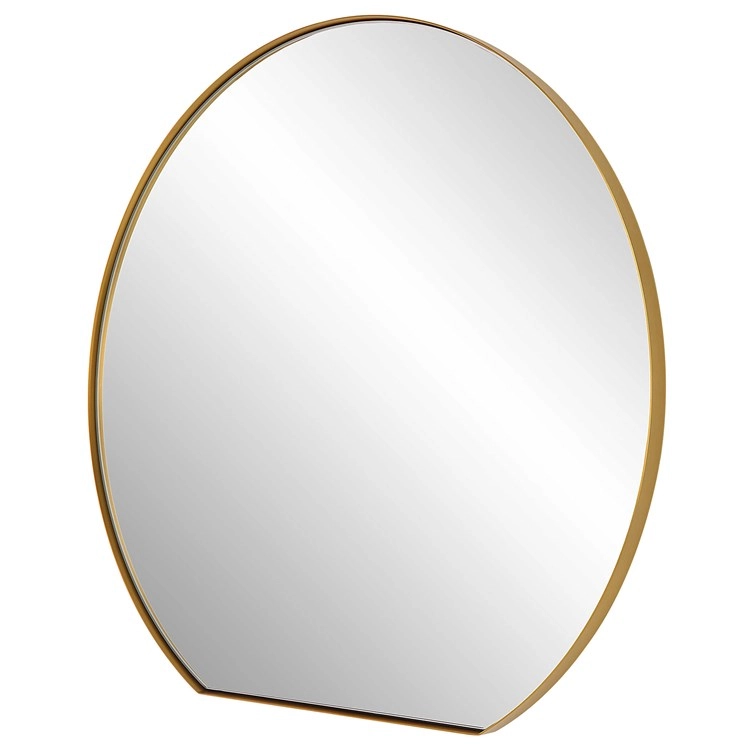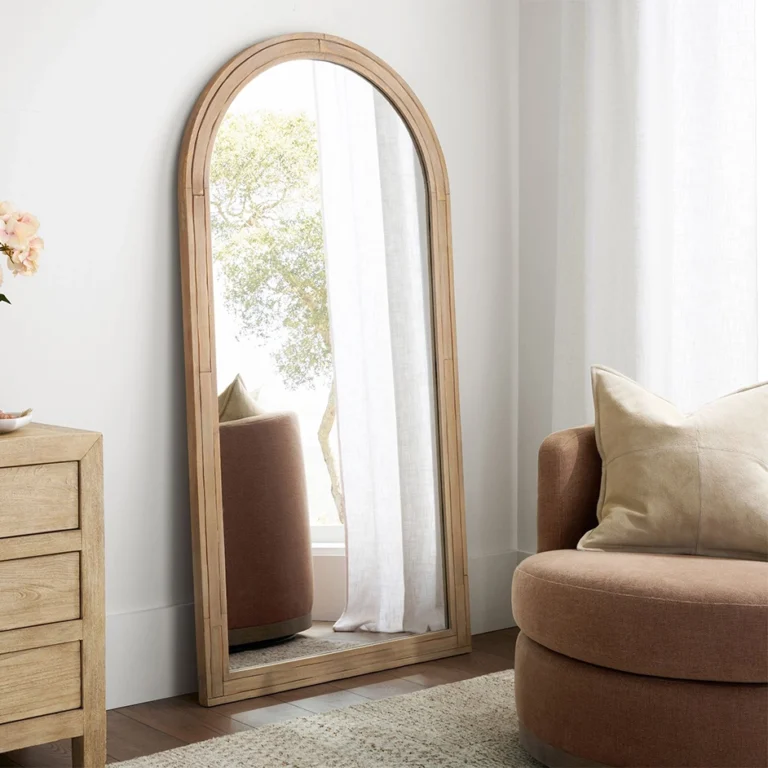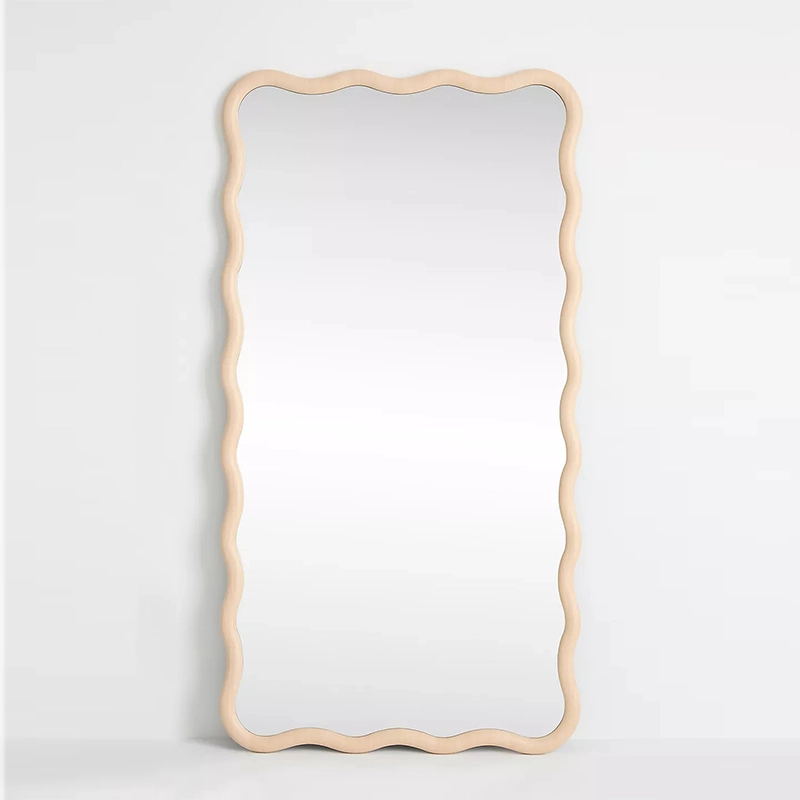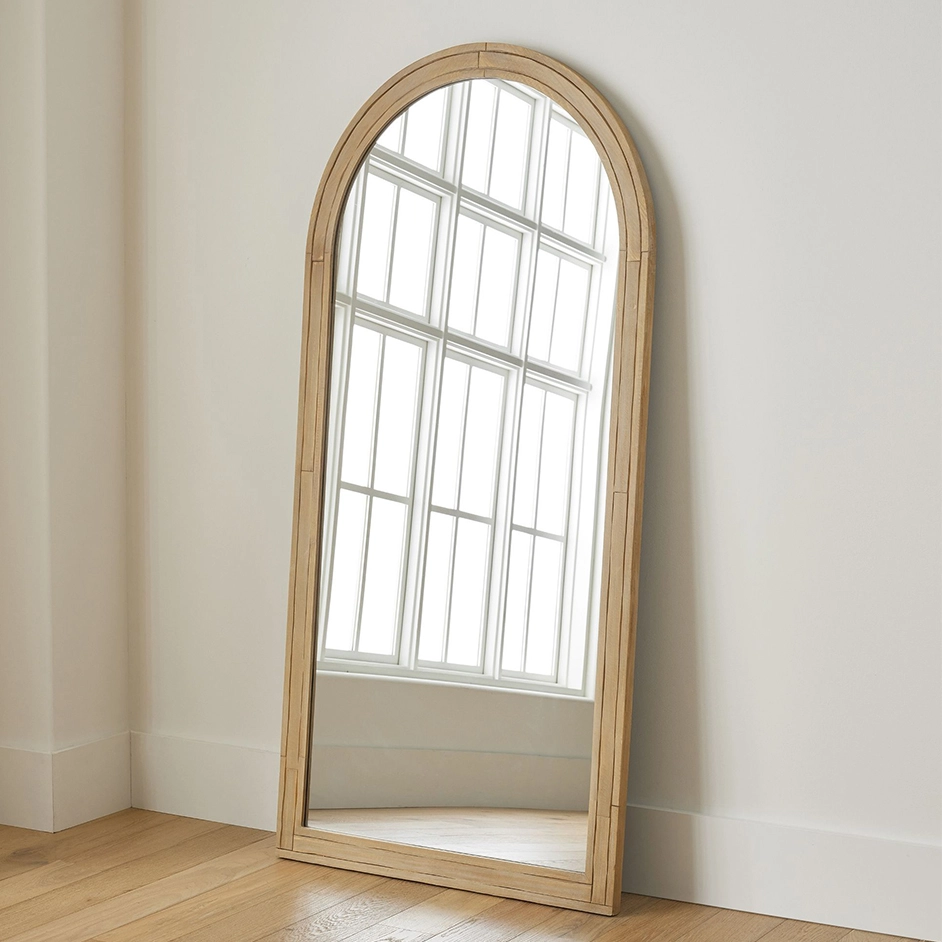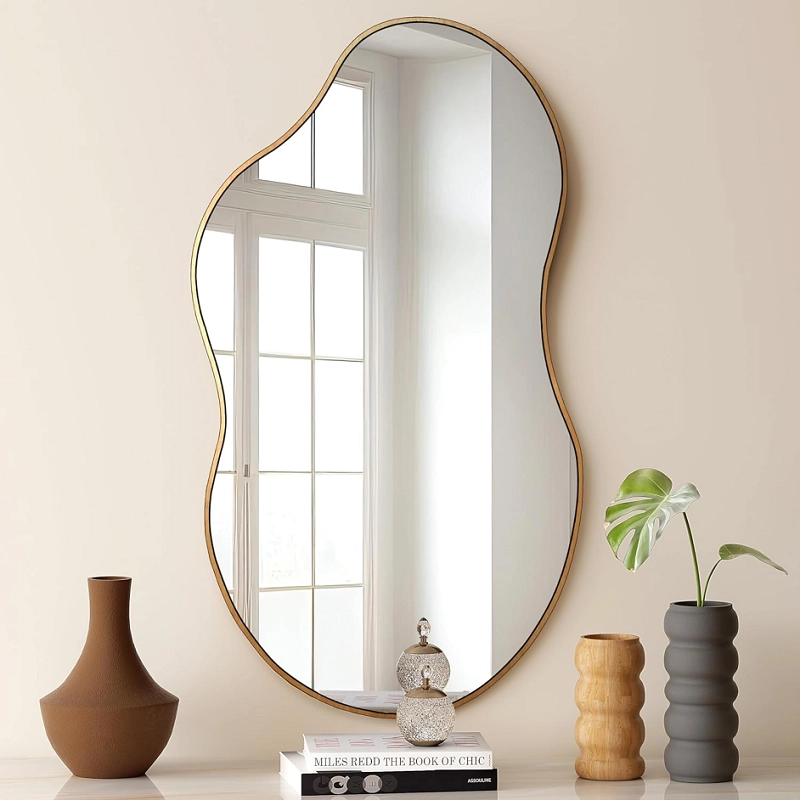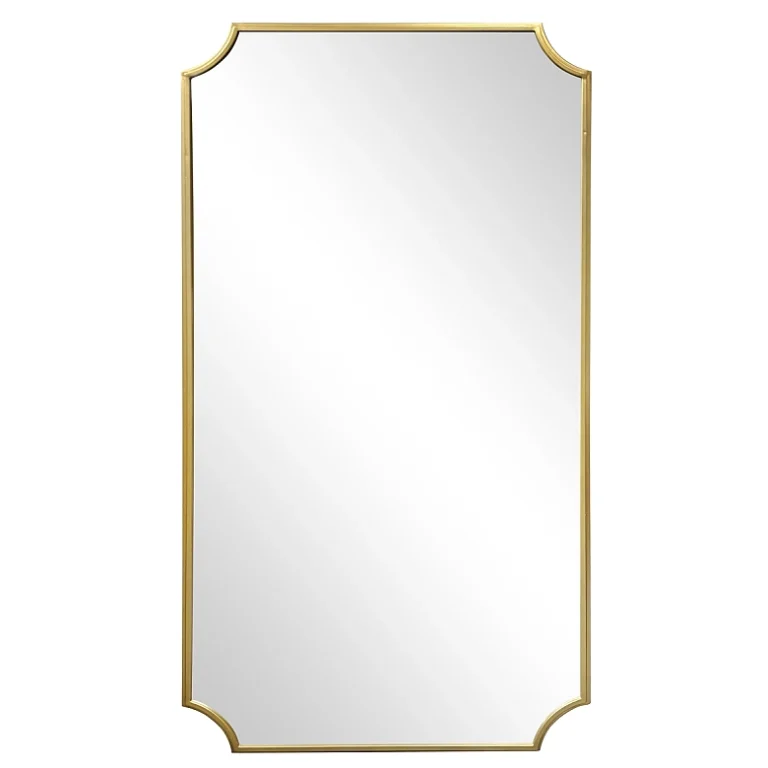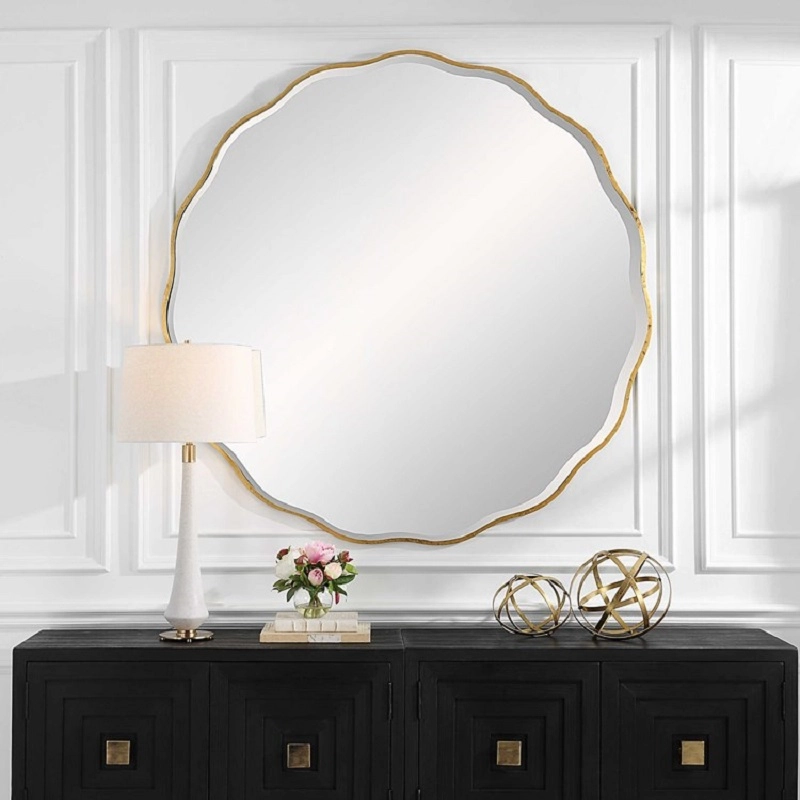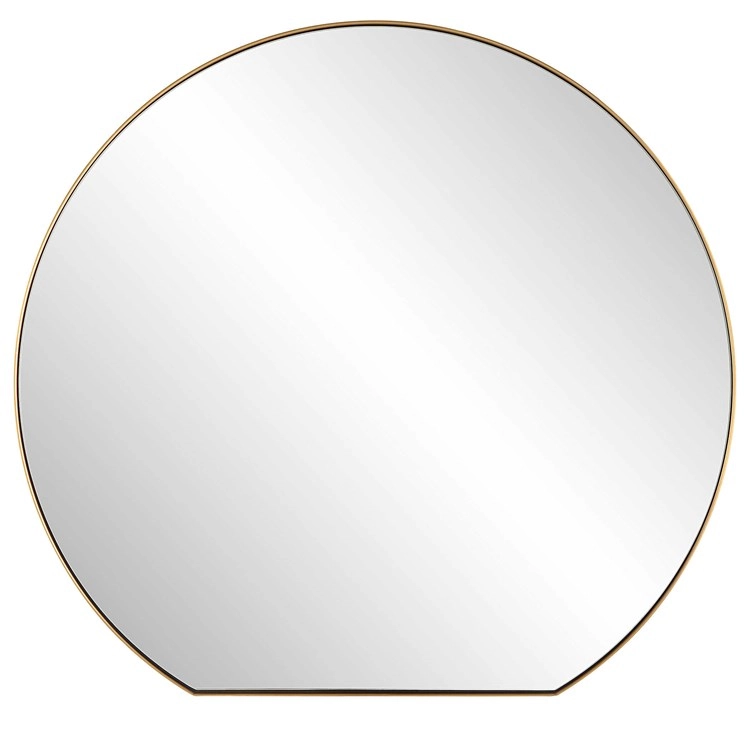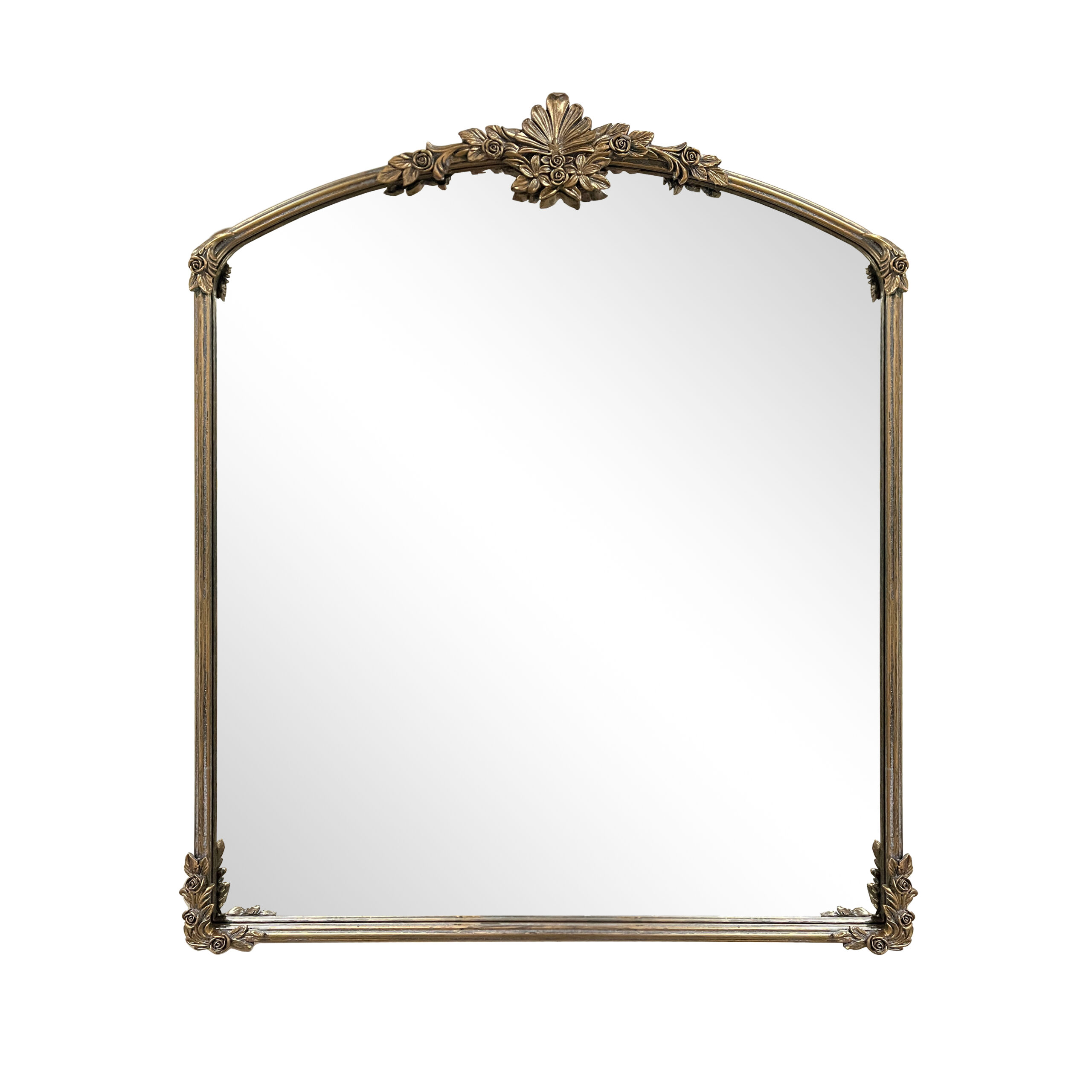Customized European-Style Round Decorative Wall Mirrors
European and American-style round decorative wall mirrors are renowned for their classic and elegant designs, often used to enhance the aesthetic appeal and functionality of interior spaces. Below is a detailed customization plan for round decorative wall mirrors, incorporating various materials, design styles, and application scenarios.
1. Material Selection
-
MDF (Medium-Density Fiberboard):
An eco-friendly material commonly used for crafting mirror frames, MDF offers excellent moldability and stability. It can be intricately carved with elaborate European-style patterns, making it ideal for luxurious mirror designs. -
Metal Frames:
Materials like aluminum alloy or wrought iron add a modern or vintage touch. For instance, Xinyinghua’s aluminum alloy frames are a popular choice among households due to their unique designs, premium materials, and fine craftsmanship. -
Wooden Trim:
Hollow 6mm wooden trim provides a minimalist yet elegant finish, serving as a stylish accent in modern home decor. This material is perfect for framing mirrors with a natural texture. -
PU Molding:
Made from polyurethane, PU molding mimics traditional plaster detailing and is often used for wall decor. While primarily applied to accent walls, it can also embellish mirror frames with intricate carved textures.
2. Design Styles
-
Classic European:
Round mirrors in this style typically feature ornate carvings, such as Rococo-inspired motifs and swirling lines, evoking a sense of history and nobility. For example, polygonal wall mirrors with classical elements can elevate a space’s artistic ambiance. -
Modern Minimalist:
Emphasizing clean, fluid lines, these mirrors avoid excessive detailing. Simple geometric shapes (e.g., circles or ovals) paired with metal or wooden frames suit contemporary interiors. -
Bohemian:
Bohemian-style mirrors celebrate creativity and freedom, often incorporating handwoven borders or unique patterns. A Scandinavian-inspired mirror with woven cotton threads and wooden beads, for instance, adds an exotic flair to bedrooms or dressing areas. -
New Chinese Style:
Blending traditional Eastern aesthetics with modern simplicity, this style often features circular mirrors with black, white, gold, or red wood-grain edges, creating a harmonious fusion of heritage and modernity.
3. Application Scenarios
-
Living Room:
An ideal spot to showcase decorative mirrors. A large round mirror placed above the sofa can visually expand the space while adding artistic charm. -
Bedroom:
Round mirrors mounted near the bed or on closet doors enhance functionality and aesthetics. A bohemian woven mirror, for example, complements bedroom decor. -
Bathroom:
These mirrors serve practical purposes while elevating the room’s visual appeal. A double-sided sliding farmhouse mirror with touch functionality is a great choice. -
Hallway:
Installing round mirrors in corridors improves brightness and creates a sense of openness. A rectangular MDF mirror with a gold frame, for instance, enhances the hallway’s allure.
4. Customization Process
-
Consultation:
Discuss the client’s needs, including dimensions, materials, colors, and design preferences. -
Design Proposal:
Provide sketches or 3D renderings for approval before production. -
Sample Confirmation:
Deliver a prototype to ensure quality and design alignment. -
Mass Production:
Begin full-scale manufacturing after sample approval, maintaining strict quality control. -
Logistics:
Arrange shipping based on the client’s requirements (note: shipping costs are buyer’s responsibility).
5. Key Considerations
-
Accurate Measurements:
Ensure precise dimensions for a perfect fit. -
Color Coordination:
Choose hues that harmonize with the interior (e.g., white or light tones for a spacious feel). -
Installation Method:
Select sturdy mounting hardware based on the mirror’s weight and size. -
Maintenance:
Clean surfaces regularly with non-abrasive solutions to preserve clarity and coating.
By following this plan, you can customize a perfect round decorative wall mirror that adds unique charm to your living space.
Generally speaking, our order requirements are as follows: the minimum order quantity (MOQ) for large items is 50 pieces, for regular items it is 100 pieces, for small items it is 500 pieces, and for very small items (such as ceramic decorations) the MOQ is 1,000 pieces. Orders exceeding $100,000 will receive a 5% discount. The delivery timeline is determined based on the specific order quantity and production schedule. Typically, we are able to complete delivery within two months.
